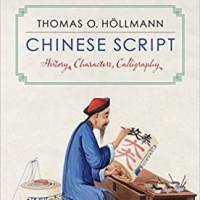From bone shards to swipe keyboards, "Chinese Script: History, Characters, Calligraphy" is a brief but absorbing crash course on the origins and evolution of China's writing system that tackles a range of topics beyond language.
Chinese Script, by Thomas O. Hollmann, Translated by Maximiliane Donicht.
128 pages
COLUMBIA UNIVERSITY PRESS, Nonfiction.
Straightforward explanations of ethnography in and around China, socioeconomics and tools ranging from brushes to moveable type are rich with details of how history continues to impact the present, including the Japanese language.
Why are certain Asian languages traditionally written vertically? Before paper, bamboo slats were tied together to form multiple columns. Similar practical concerns, it turns out, explain why books are divided into chapters.
Hollmann also explores the more technical aspects of the writing itself, for example character radicals, and such sections are illuminating and often accompanied by engaging anecdotes.
"Chinese Script" makes for good park bench reading, but be warned — even idly flipping through with a computer nearby may lead to a tumble down the rabbit hole of Wikipedia searches and a startling number of tabs.
It's a book that raises questions even as it informs. There are many details that readers will feel compelled to follow up, from the Yangzi "bird seal script," whose characters resemble talons, feathers and beaks, to the arguments for and against calligraphy as a representation of an individual's true self.

















With your current subscription plan you can comment on stories. However, before writing your first comment, please create a display name in the Profile section of your subscriber account page.